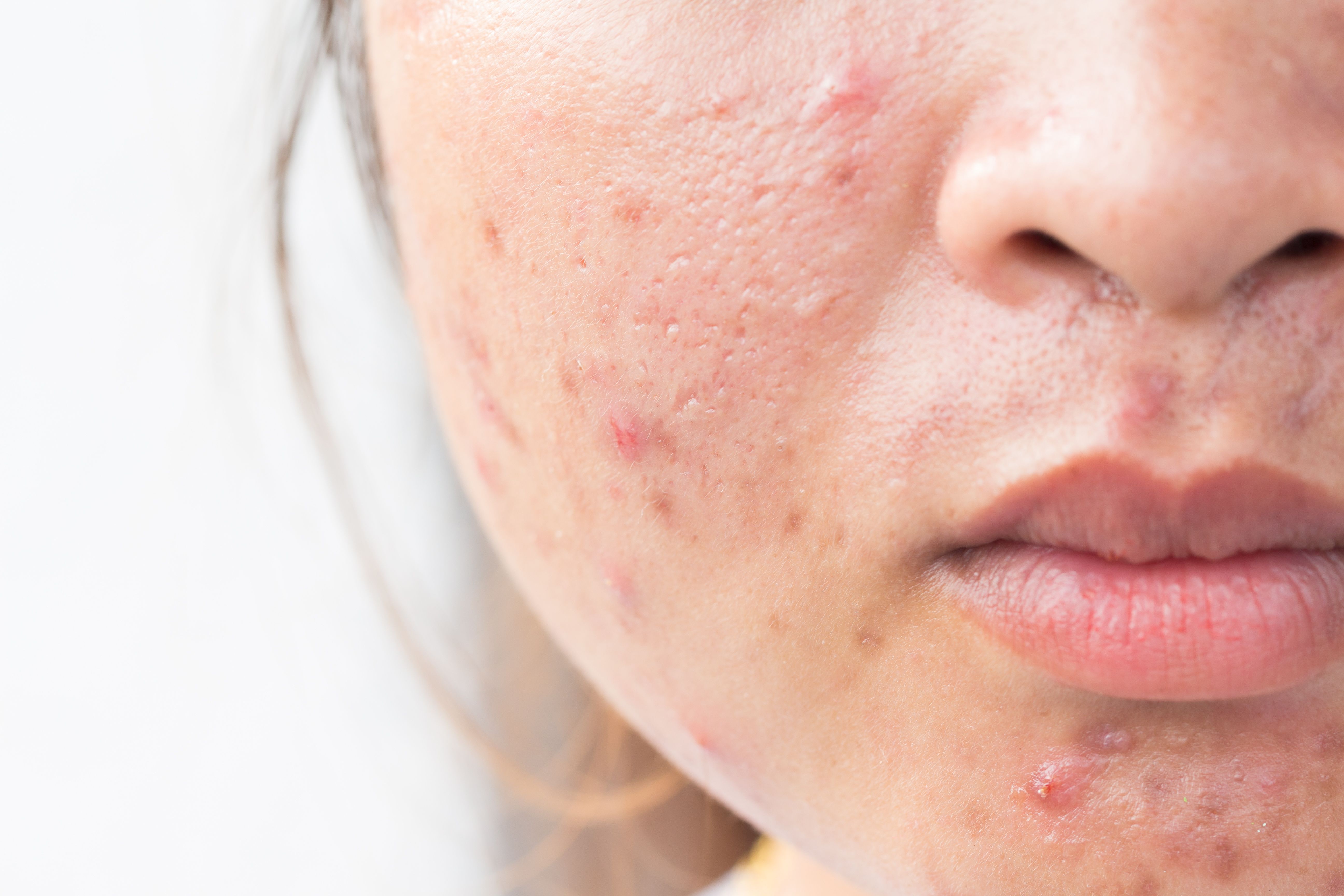- Center on Health Equity & Access
- Clinical
- Health Care Cost
- Health Care Delivery
- Insurance
- Policy
- Technology
- Value-Based Care
Dermocosmetics as Adjunctive Therapy Reduces Sensitivity and Improves Quality of Life in Acne
Dermocosmetics alongside traditional acne treatments improved skin tolerance and reduced acne severity in patients, particularly those using retinoids, leading to enhanced quality of life.
Dermocosmetics alongside traditional acne treatments improved skin tolerance and reduced acne severity in patients, particularly those using retinoids, leading to enhanced quality of life. | Image Credit: frank29052515 - stock.adobe.com

This article originally appeared on Dermatology Times®.
Patients with acne experienced enhanced tolerability and sensitivity when using dermocosmetics as adjunctive therapy for holistic acne management, according to a study published in Journal of Cosmetic Dermatology.1
When cleanser and lotion are combined, the potential results are reduced adverse effects of erythema, scaling, drying, and burning. Researchers conducted a prospective, multicenter, observational study across 13 clinics in the Republic of Korea. Out of 304 total patients, 55.9% identified as female, with 26.4 years as the mean age. Participants were then split up based on their treatment history into a retinoid group (n = 157) and a nonretinoid group (n = 147).
For 12 weeks, patients followed a regimented dermocosmetic routine consisting of an added foaming face wash and moisturizer to an existing therapy of either benzoyl peroxide, tretinoin, adapalene, trifarotene, azelaic acid, adapalene, clindamycin, or oral isotretinoin.
Dermatologists observed each patient’s dosage and frequency with the Global Acne Grading System, along with the amount of sebum production and the type (comedonal, inflammatory, mixed, nodulocystic) and location of acne. Results tracked whether participants had scarring, postinflammatory erythema, and/or postinflammatory hyperpigmentation.
The cleanser was used twice daily and included Bixa orellana seed extract, niacinamide 2%, mannose, and Aqua Posae Filiformis in its ingredients. The corresponding lotion formulation was applied only once a day and included the same ingredients as the cleanser, as well as plant extract and panthenol.
The primary end point analyzed changes in skin sensitivity for both retinoid and nonretinoid users. Study authors used a 4-point scale to determine sensitivity, erythema, desquamation, and dryness. Patients also self-reported their experiences with any itching, tingling, burning, and pain, as well as overall satisfaction and tolerance levels.
The secondary end point relied on patient reporting to assess acne’s impact on quality of life (QOL) based on specific areas of the face including the T-zone, hairline, cheeks, and chin. Investigators expressed interest in better understanding the psychological burden of acne and how different locations can impact this. Some studies have indicated that acne’s negative impact on QOL can be just as severe as other chronic conditions like asthma, epilepsy, and back pain.2
“Effective acne management strategies should not only target clinical improvement but also prioritize QoL improvements,” the authors wrote.1 “One crucial aspect of this is mitigating the adverse effects of acne treatment, particularly the dryness and irritation commonly associated with retinoids, which can lead to treatment discontinuation and ultimately hinder clinical success.”
Skin sensitivity improved across both cohorts, but the retinoid group saw a greater improvement compared with the nonretinoid one (−0.88; 95% CI, −0.97 to −0.79; vs −0.57; 95% CI, −0.66 to −0.49], respectively). Acne severity and sebum secretion also decreased among both groups but more so in the retinoid one (−2.49; 95% CI, −2.73 to −2.25; vs −1.41; 95% CI, −1.58 to −1.25], respectively).
The study authors indicated a trend toward greater baseline sensitivity based on those in the retinoid group who had higher baseline scores for erythema, desquamation, and dryness. All participants experienced reduced patient-reported itching, tingling, and burning but no statistical difference was identified between the 2 groups.
Prior to treatment, the overall QOL score was 14.24. The presence of cheek acne displayed a more negative score compared with areas like the T-zone. After dermocosmetic therapy, QOL increased to 17.87, an overall improvement across all sections of the face, with the most substantial increase noted on the cheeks.
The reliance on subjective patient-reported outcomes may have increased the potential for bias, creating a study limitation. Additionally, it may be difficult to establish causal relationships because of the study's observational design. Future studies should analyze randomized controlled trials with longer follow-up periods and larger sample sizes to explore deeper findings.
“By incorporating ingredients designed to fortify the skin barrier, reduce inflammation, and support a healthy skin microbiome, dermocosmetics may provide a synergistic approach to improving patient comfort and optimizing treatment outcomes,” the authors concluded.
References
1. Suh DH, Kim TE, Lee SJ, Jeong SJ, Baek E, Shin MK. Enhanced tolerability and improved outcomes in acne management: a real-world study of dermocosmetic adjunctive therapy. J Cosmet Dermatol. 2025;24(1):e16772. doi:10.1111/jocd.16772
2. Akinboro AO, Ezejiofor OI, Olanrewaju FO, et al. The impact of acne and facial post-inflammatory hyperpigmentation on quality of life and self-esteem of newly admitted Nigerian undergraduates. Clin Cosmet Investig Dermatol. 2018;11:245-252. doi:10.2147/CCID.S158129
Delgocitinib Is Redefining Chronic Hand Eczema Treatment: A Q&A With Raj Chovatiya, MD, PhD, MSCI
November 10th 2025Delgocitinib has emerged as a promising treatment for CHE, addressing unmet needs and enhancing understanding of this complex condition, notes Raj Chovatiya, MD, PhD, MSCI.
Read More
